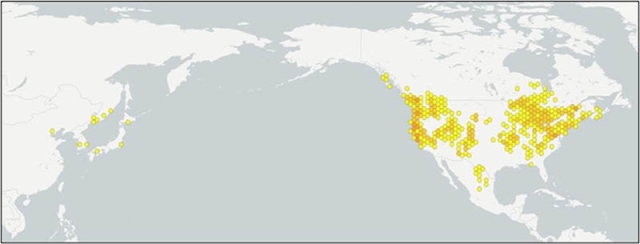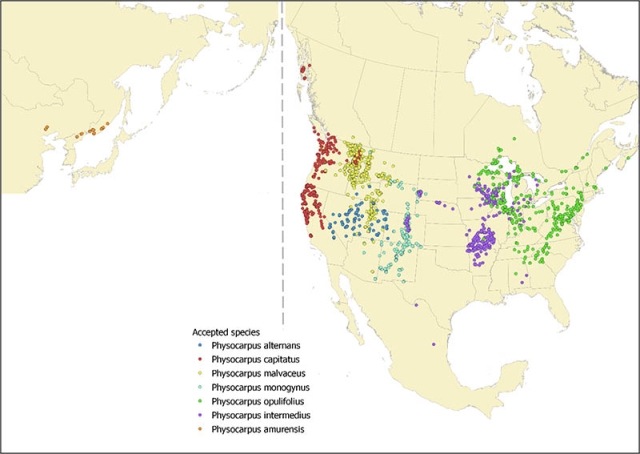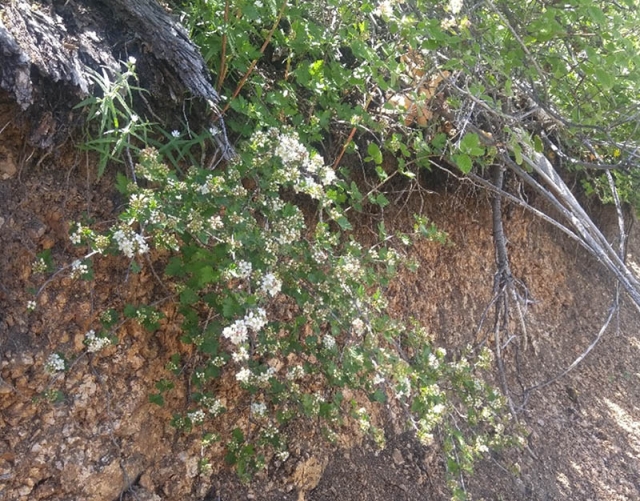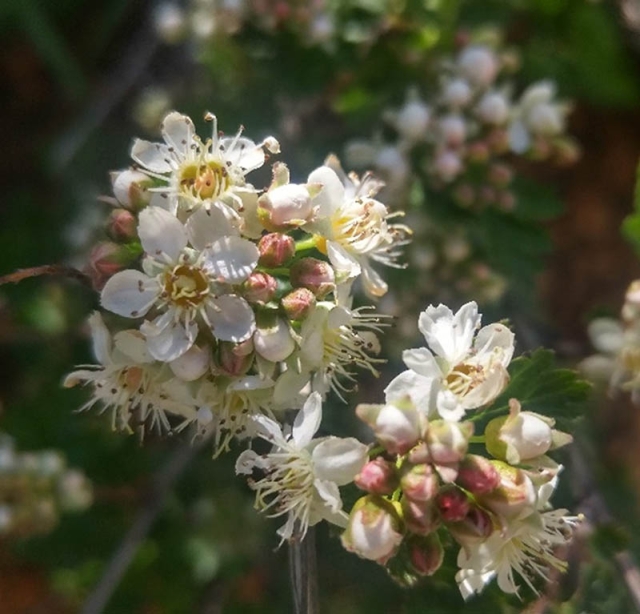Solving a taxonomic and biogeographic puzzle with Physocarpus
The geographic distributions of plants that we see today provide a glimpse of the past. They are snapshots in a much longer story driven by major events such as the formation of mountain ranges, glaciation, and global shifts in climate.
One distribution pattern has drawn the attention of botanists like Asa Gray for centuries: North American plants with close relatives in eastern Asia. This includes plants native to the Southern Rockies of Colorado like Physocarpus (Cambess.) Raf., also known as ninebark, a flowering shrub in the rose family (Rosaceae). A study completed in 2005 determined that Physocarpus most likely originated in North America before migrating to eastern Asia. But the timing of this disjunction (or geographic separation) – and therefore the major events driving it – remains unknown. As a doctoral student at the University of Colorado Denver’s Department of Integrative Biology, I will be working on this biogeographic puzzle using Physocarpus.

The native range of Physocarpus (ninebark) is divided between eastern Asia and North America.
Unfortunately, without the ability to time travel, we can’t directly observe what the world was like thousands to millions of years ago. Instead, I will rely on indirect methods such as phylogenetic reconstruction (a tree showing the evolutionary relationships among species) to provide evidence to decipher the patterns seen today.
According to the “Flora of North America North of Mexico” and Kew’s Plants of the World Online, there are seven species of Physocarpus: P. amurensis (Maxim.) Maxim in eastern Asia; P. capitatus (Pursh) Kuntze (Pacific ninebark), P. malvaceus (Greene) Kuntze (mallow-leaved ninebark), P. alternans (M.E. Jones) J.T. Howell (dwarf ninebark), and P. monogynus (Torr.) J.M. Coult. (mountain ninebark) in western North America; P. opulifolius (L.) Maxim. (common ninebark) in eastern North America, and P. intermedius (Rydb.) C.K. Schneid. disjunct between eastern and western North America.

Composite map showing the native ranges of the seven species of Physocarpus currently recognized by the "Flora of North America North of Mexico" and Kew’s Plants of the World Online.
Physocarpus also has an identity problem: the seven currently recognized species have more than 50 synonyms from four different genera. This lack of clarity affects our understanding of the Colorado flora: depending on the source, there are two, three, or four species of
Physocarpus native to Colorado.
Part of the reason for this confusion lies within the visible characteristics. With a few exceptions, the morphological characters typically used to separate species tend to “bleed” into one another across the large range of this widely distributed genus. To account for this, my sample collection will be geographically representative as well as taxonomically representative – that is, I will collect samples from across the species’ ranges, including those of synonyms. Regardless, in the end, it is possible that my research will support a theory expressed by Swedish-American botanist Per Axel Rydberg in 1896: “Perhaps all of the [Physocarpus species] of North America are but one very variable species.”


Physocarpus monogynus (Torr.) J.M. Coult. (mountain ninebark); foothills west of Parry Park, Douglas County, Colorado; May 31, 2018. Photo credit: Audrey Spencer.
In addition to providing sufficient lines of evidence for determining the number of species within Physocarpus, this project will help us better understand the origins of the Southern Rockies flora, in particular the intercontinental disjunctions between eastern Asia and western North America.
This article was contributed by Ph.D. student and Alice Eastwood Fellow, Department of Integrative Biology, University of Colorado Denver, Audrey Spencer.
Add new comment